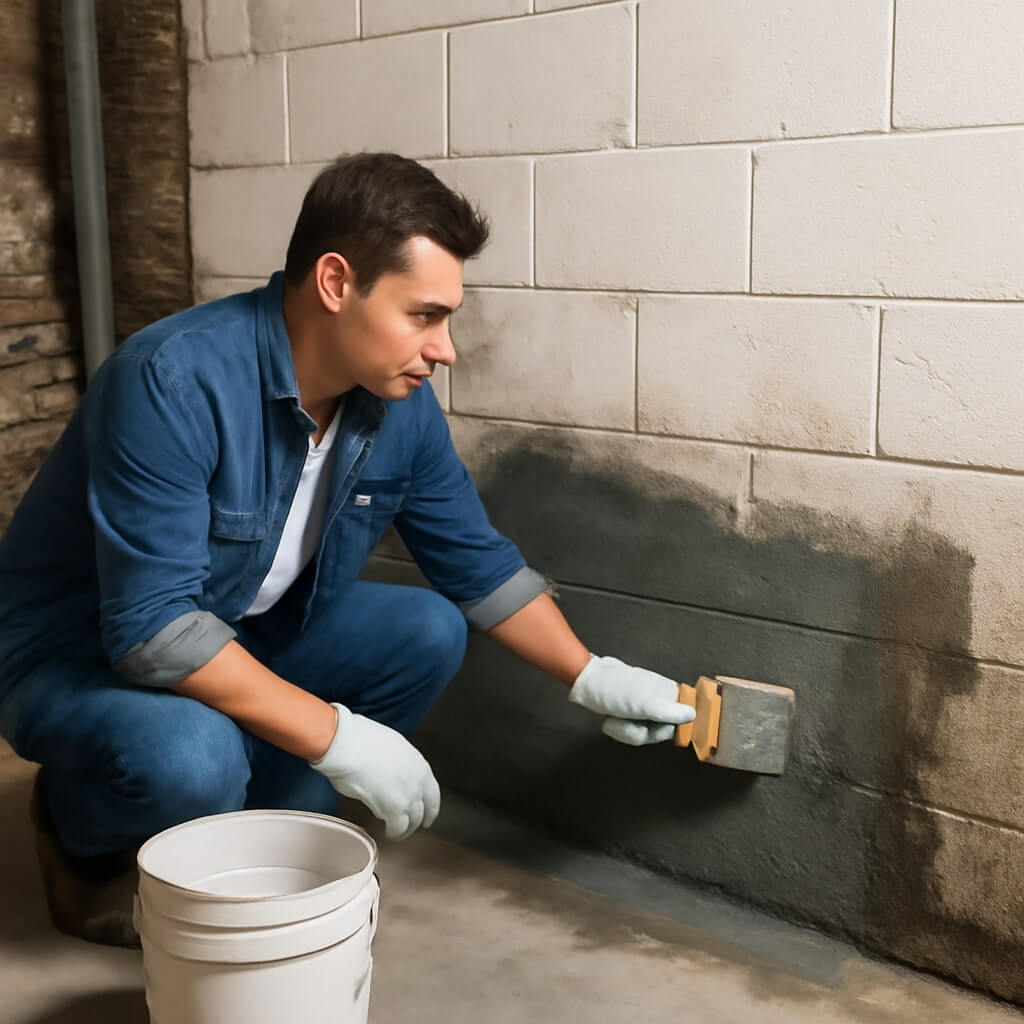If you’re dealing with a damp basement, you’re not alone. Many homeowners face this issue, but you don’t have to break the bank to keep your space dry. There are several practical, affordable methods to tackle basement waterproofing on your own. From sealing cracks to improving exterior drainage, each step can make a significant difference. Let’s explore these effective strategies that can protect your home and save you money in the long run.
Key Takeaways
- Seal cracks and joints with affordable caulk to prevent moisture entry using silicone or polyurethane options.
- Improve exterior drainage by regrading the landscape and maintaining gutters to direct water away from your foundation.
- Use a dehumidifier to manage humidity levels and prevent mold growth in your basement environment.
- Apply waterproofing paint to walls to create a moisture barrier and protect against dampness using high-quality products.
- Install a sump pump in a pit below the water table to manage groundwater effectively and safeguard your basement.
Seal Cracks and Joints With Caulk
One effective method to prevent water intrusion in your basement is sealing cracks and joints with caulk.
Start by identifying any gaps where moisture might seep in. Choose the right caulk types, like silicone or polyurethane, for the best results. Clean the area thoroughly before applying.
Use a caulking gun to apply an even bead along the cracks, ensuring you fill them completely. For larger gaps, consider using backer rod before caulking.
Employ proper sealing techniques to create a watertight barrier, and let it cure fully. This simple task can notably reduce the risk of water damage in your basement.
Install a Sump Pump
Installing a sump pump can greatly enhance your basement’s protection against flooding.
To begin sump pump installation, choose a suitable location in your basement, ideally below the water table. Dig a pit and place the pump inside, guaranteeing it’s level. Connect the discharge pipe to redirect water outside.
After installation, regular sump pump maintenance is essential. Check the pump’s operation periodically and clean the inlet screen. Test the float switch to confirm it activates properly.
Use a Dehumidifier
A dehumidifier can be a game changer for your basement, especially if you’re dealing with dampness and humidity.
By effectively managing humidity control, it helps prevent mold growth and protects your belongings.
Place the dehumidifier in a central location to maximize air circulation, ensuring that moisture is drawn out from all corners of the space.
Regularly check the water level and empty the tank as needed, or opt for a model with a drainage feature for convenience.
You’ll notice a significant difference in air quality, making your basement a more comfortable and usable area for your family.
Apply Waterproofing Paint
Transform your basement’s defenses against water damage by applying waterproofing paint. This effective method is a key part of your waterproofing techniques toolkit.
Start by cleaning the walls thoroughly, removing any mold or dirt. Next, choose a high-quality waterproofing paint designed for basements.
To ensure effective waterproofing, clean walls thoroughly and select a high-quality paint specifically designed for basements.
Proper paint application is essential; use a roller for even coverage and don’t forget to apply it to corners and seams. Allow the paint to dry completely before adding a second coat for maximum protection.
With this simple yet powerful step, you’ll create a barrier that keeps moisture at bay and your basement dry.
Improve Exterior Drainage
When it comes to keeping your basement dry, improving exterior drainage is essential, especially if you’re dealing with frequent water issues.
Start by ensuring your landscaping slope directs water away from your home. If the ground around your foundation slopes inward, consider regrading it to create a proper slope.
Regular gutter maintenance is also vital; clean your gutters and downspouts to prevent clogs that can lead to overflow. Installing downspout extensions can further direct water away from your foundation.
Conclusion
By tackling DIY basement waterproofing with these five affordable methods, you can create a dry, safe space without breaking the bank. Sealing cracks, installing a sump pump, using a dehumidifier, applying waterproofing paint, and improving exterior drainage are all manageable tasks that make a significant difference. Take action today to protect your basement from moisture and mold, and enjoy the peace of mind that comes with a well-maintained home. Your dry basement awaits!

